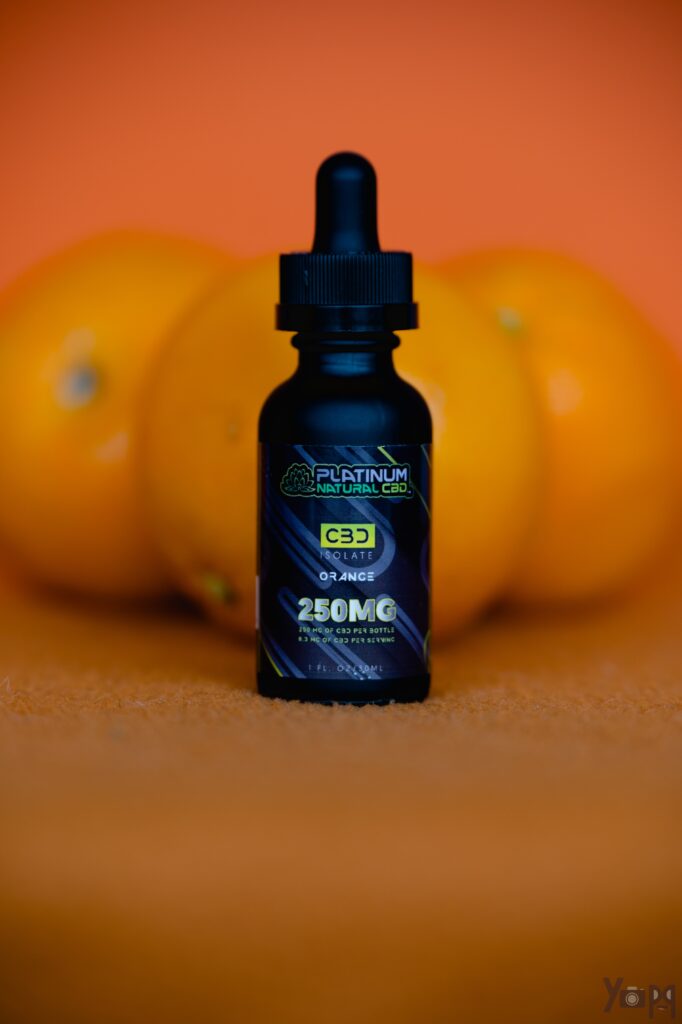Did you know that FDA uses CBD to formulate medication?

In June 2018, the FDA approved Epidiolex (a plant-based formulation of CBD) to treat seizures for people 2 years of age and older with Dravet syndrome and Lennox-Gastaut syndrome (LGS), which are two rare forms of epilepsy. Several trials showed CBD significantly reduced seizure frequency by almost 44% in most people. https://platinumnaturalcbd.co/product/orange-cbd-isolate-30ml-500-mg/
An observational study of CBD treatment reported an improvement in self-reported quality of life measures for people with non-cancer-related pain. Other research has shown that CBD has anti-inflammatory effects, and it may relieve pain by this mechanism. https://platinumnaturalcbd.co/product/hemp-salve/
A case series of 47 people with multiple sclerosis reported improvements in pain, walking, and muscle spasms with a combination of CBD and THC.
Several smalls studies have investigated using CBD to relieve symptoms of Parkinson’s Disease, with mostly encouraging results. CBD shows promise for improving the quality of life in people with Parkinson’s disease
Most studies investigating if CBD is beneficial at relieving nausea or vomiting, have used a combination of CBD and THC, rather than just CBD alone. A 2016 review found the combination to be more effective. (Full Spectrum Oil)
More recent research points to THC being more effective at reducing nausea and vomiting than CBD.
If oil is not your thing, check out our edibles.
Both of these items have a combination of CBD, Terpenes, and THC, making them more potent and effective quicker.
Full Spectrum (Day Time) https://platinumnaturalcbd.co/product/full-spectrum-gummy-bears-500-mg
If youre oppose to using THC, check out these edibeles:
Neon Worms https://platinumnaturalcbd.co/product/neon-worms-2/
- Dorbian I. CBD Market Could Reach $20 Billion By 2024, Says New Study. May 20, 2019. Forbes https://www.forbes.com/sites/irisdorbian/2019/05/20/cbd-market-could-reach-20-billion-by-2024-says-new-study/?sh=3c2196f149d0
- Grinspoon P. Cannabidiol (CBD) — what we know and what we don’t. Aug 24th, 2018. Harvard Health Publishing Harvard Medical School. https://www.health.harvard.edu/blog/cannabidiol-cbd-what-we-know-and-what-we-dont-2018082414476
- Silvestro S, Mammana S, Cavalli E, Bramanti P, Mazzon E. Use of Cannabidiol in the Treatment of Epilepsy: Efficacy and Security in Clinical Trials. Molecules. 2019;24(8):1459. Published 2019 Apr 12. DOI:10.3390/molecules24081459
- CBD for chronic pain: The science doesn’t match the marketing. Sept 23, 2020. Harvard Health Publishing Harvard Medical School. https://www.health.harvard.edu/blog/cbd-for-chronic-pain-the-science-doesnt-match-the-marketing-2020092321003
- Hammell DC, Zhang LP, Ma F, et al. Transdermal cannabidiol reduces inflammation and pain-related behaviors in a rat model of arthritis. Eur J Pain. 2016;20(6):936-948. DOI:10.1002/ejp.818
- Linares IM, Zuardi AW, Pereira LC, Queiroz RH, Mechoulam R, Guimarães FS, Crippa JA. Cannabidiol presents an inverted U-shaped dose-response curve in a simulated public speaking test. Braz J Psychiatry. 2019 Jan-Feb;41(1):9-14. DOI: 10.1590/1516-4446-2017-0015. Epub 2018 Oct 11. PMID: 30328956; PMCID: PMC6781714.
- Gulbransen G, Xu W, Arroll B. Cannabidiol prescription in clinical practice: an audit on the first 400 patients in New Zealand. BJGP Open. 2020;4(1):bjgpopen20X101010. Published 2020 May 1. doi:10.3399/bjgpopen20X101010
- Shannon S, Lewis N, Lee H, Hughes S. Cannabidiol in anxiety and sleep: a large case series. Perm J. 2019;23:18–41. DOI: 10.7812/TPP/18-041
- Crippa JA, Guimarães FS, Campos AC, Zuardi AW. Translational Investigation of the Therapeutic Potential of Cannabidiol (CBD): Toward a New Age. Front Immunol. 2018;9:2009. Published 2018 Sep 21. doi:10.3389/fimmu.2018.02009
- De Gregorio D, McLaughlin RJ, Posa L, et al. Cannabidiol modulates serotonergic transmission and reverses both allodynia and anxiety-like behavior in a model of neuropathic pain. Pain. 2019;160(1):136-150. doi:10.1097/j.pain.0000000000001386
- Oláh A, Tóth BI, Borbíró I, et al. Cannabidiol exerts sebostatic and antiinflammatory effects on human sebocytes. J Clin Invest. 2014;124(9):3713-3724. doi:10.1172/JCI64628
- Oláh A, Markovics A, Szabó-Papp J, Szabó PT, Stott C, Zouboulis CC, Bíró T. Differential effectiveness of selected non-psychotropic phytocannabinoids on human sebocyte functions implicates their introduction in dry/seborrhoeic skin and acne treatment. Exp Dermatol. 2016 Sep;25(9):701-7. doi: 10.1111/exd.13042. Epub 2016 Jun 15. PMID: 27094344.
- Rock EM, Sticht MA, Limebeer CL, Parker LA. Cannabinoid Regulation of Acute and Anticipatory Nausea. Cannabis Cannabinoid Res. 2016;1(1):113-121. Published 2016 Apr 1. doi:10.1089/can.2016.0006
- Russo M, Calabrò RS, Naro A, Sessa E, Rifici C, D’Aleo G, Leo A, De Luca R, Quartarone A, Bramanti P. Sativex in the management of multiple sclerosis-related spasticity: role of the corticospinal modulation. Neural Plast. 2015;2015:656582. doi: 10.1155/2015/656582. Epub 2015 Jan 29. PMID: 25699191; PMCID: PMC4325203.
- James M. Nichols and Barbara L.F. Kaplan.Cannabis and Cannabinoid Research.Mar 2020.12-31.http://doi.org/10.1089/can.2018.007
- Rieder CR. Cannabidiol in Parkinson’s disease. Braz J Psychiatry. 2020;42(2):126-127. doi:10.1590/1516-4446-2019-0810
